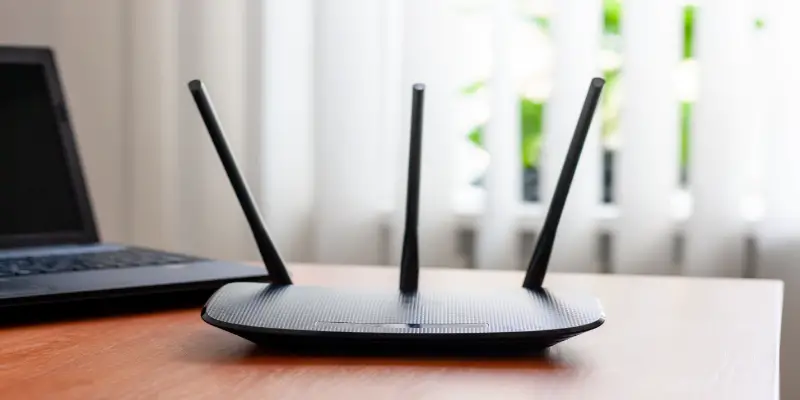Disclaimer: This post may contain affiliate links, meaning we get a small commission if you make a purchase through our links, at no cost to you. For more information, please visit our Disclaimer Page.
When configuring a wireless router, you need to know what type of router you have.
Several computers and other devices can use a single network or IP address from a single router with the help of NAT. NAT enables computers to communicate with the internet by creating a connection path for public addresses and private addresses.
Table of Contents
Do wireless routers use NAT?
Many home users have several devices yet want to access the internet with each of their devices. For these devices to communicate, they need to have at least one IP address, but you only get one IP from your ISP (internet service provider). NAT is helpful for the communication between the public IP address and private IP address.
Network Address Translation (NAT) takes a web request from a PC on LAN and sends it to the webserver but translates in a way the return address is the address of the router. The reason being, the PC’s IP address is only valid on the local home network while the public-facing IP given by the ISP is one.
Sending it with the local IP address would not allow the webserver to find your PC. When the reply is received from the web server, NAT then sends it to the relevant PC. There is no other more straightforward way of doing this with IPv4. One way or another, you have to be able to share a single public IP address among numerous devices.
Nevertheless, IPv6 can solve this since it can give every single device in the globe a unique IP address and leave many addresses to spare. NAT is not the best but using it helps maintain some security since it hides the IP address from the outside world.
Additionally, it’s essential to have NAT configuration settings since they are helpful when only specific ports are needed to be opened. Nonetheless, this can automatically be done using the UPnP protocol, but it’s not safe.
Hence router NAT settings allow for the opening of specific ports for each app and PC that require them. As we all know, everything has its pros and cons, so is the use of NAT, which includes;
Pros of using NAT
1. Its bits help prevent the depletion of IPv4 addresses
2. NAT helps in playing a role in maintaining a level of security since it keeps IP addresses hidden, getting the source and destination address is not open for tracing.
3. NAT enables the connection of more than one device to the net since it enables the translation of public IP and that of the private one.
4. It enables you to use a private IPv4 addressing system and stop the internal address changes when you change service providers.
Cons of NAT
1. Some network applications may not function as anticipated in a NAT network configured system.
2. It makes it hard to trace end-to-end IP address traceability.
How do I know if my wireless router has NAT?
There are a couple of ways to know if your router is using NAT configuration. One of them being:
1. If using a Windows computer, open the command prompt and type ipconfig, then press enter. Suppose you are using a Linux box or a Mac; when you open the command prompt, type ifconfig. These two commands will show the local IP address.
2. Open your web browser and search “what is my IP address.” The web browser will give you the IP address from the internet.
3. If the addresses are the same, you are not using NAT, but you are most likely using NAT if the addresses are different. However, you may be using some proxies if the addresses are different.
Secondly, there is a test you can do to know if your router is using NAT. With an assumption that there is no firewall blocking ping, try pinging two PCs that are PC A to PC B and PC B to PC A, using their actual IP address. If the connection is successful, it means the router is not performing NAT.
If NAT was in use, PC A could ping with PC B only, but PC B would not ping to PC A since it would only be one way. NAT translates PC A’s IP address making it seem like it has an IP address on the same subnet as PC B.
You could have many devices on subnet A, every device with their IP address, but you have only one IP address on subnet B that could be the internet, hence the importance of NAT since it lets the devices communicate with the network/ internet using a single IP address. It’s mainly used to cushion the impact of IP v4 exhaustion.
Can I disable NAT on my wireless router?
Situations and circumstances such as having a second router will need you to turn off the NAT of one router since it can lead to using double NAT, which can have some significance on the performance. Yes, one can disable NAT but advisably for only such situations or if you want the router to give IP addresses manually.
The procedure to disable NAT is:
1. Access the Cradlepoint UI
2. Go to networking followed by local network and finally local IP network
3. Choose “IP network” to disable NAT
4. Select “Edit”
5. Choose IPv4 settings.
6. Change IPv4 Routing mode to “Standard” from “NAT (default).”
7. After doing that, click save to make the effect.
However, some home Wi-Fi routers don’t let one disable NAT. You will need to turn off their DHCP server or set their DHCP IP address lease pool to a zero-length range, then connect the LAN port to your home LAN to use such routers as simple APs.
Should I disable NAT on my wireless router?
NAT helps the router transform the IP header in outgoing packets to match the public internet address for incoming packets and inversely. When NAT is disabled, no transformation of the IP address occurs.
When transformation does not happen, you will be sending IP packets with private source IP addresses on which they will get rejected by your ISP. NAT allows you to use internal-only IP subnets. During routing, the router substitutes its address for an internal-only address.
Don’t turn off NAT unless you have a subnet for an actual IP address with you. Turning off NAT and using DSL can be slow, especially for gamers. When you turn off NAT, DHCP allocation will also be turned off, making the router expect IP addresses from the upstream.
It primarily works for one IP address; however, many ISPs allow you to buy more than one IP address from them. Turning it off is useful when you have another router downstream that will allocate DHCP addresses to your more comprehensive network. It’s also helpful if you own one computer.
Disabling NAT and putting the router into IP Passthrough mode makes it more of a modem than a router. Disabling NAT means you can only have one device connected to your network at a time. All traffic to or from an Address will go to the device.
This leaves your data and computer open for scanning and attacks from other cyber users.
Conclusion
In conclusion, whether wireless or cabled routers need and use NAT since it plays an essential role in transforming the IP address both from the PC and from the server source the net. This transformation enables communication from the internet with your Pc.
Some may want to turn off the NAT but it’s advisable not to. We should appreciate the work NAT does. IPv6, however, can replace NAT since it can provide unique IP addresses for many multiple devices.
NAT’s primary goal, as discussed above, is to make a transition between public and private IP addresses. Without NAT, you are limited to the number of devices connected to the internet at a single time. Meaning one device at a time,


